The smell of fresh, hot breakfast wafts from a large house on the east side of town. Onions, bacon, eggs and grease—it envelops the home and its giant yard, making for a cozy contrast to the dark clouds and unseasonable chill rolling over the mountains and gripping the Valley on this late-March morning.
Inside, dozens of men and a few women mill around a large family room, patiently awaiting their turn in front of the omelet station. They’re surrounded by dark green floral wallpaper that screams late ’80s and the mismatched but comfy furniture that’s no doubt supported some stories over the years. A sober halfway house is only as colorful as its residents.
But it’s not just residents who are here today. A group has gathered for fellowship, and the omelet station is taking center stage. The guy behind the burners works three pans at once, taking orders, sautéing vegetables, flipping perfectly circular egg creations. He doesn’t say much.
A few people in line know him, know his story, but mostly he fades into the background, like the well-worn furniture.
“Are you a server for a living?” asks a curious woman in line.
“I make products,” Chef Jay Littman answers in a thick Boston accent, as he coats a pan with canola oil.
“I make protein bars and cookies. I have a manufacturing plant. I just do this to keep in practice, in case I ever have to go get a job.”
It’s a modest answer, but not falsely so. The truth is that Chef Jay happens to be a multimillionaire. But he’s also well-acquainted with the same demons that make up an unspoken bond in this room.
Jay has battled drug and alcohol addictions, he’s been in legal trouble, lived on the streets, fought health problems and obesity. While his Ferrari F430 Spider sits parked outside, a symbol of personal triumph, inside lies a world that’s as tenuous as it is real. Even the most successful transformation story—and Jay has one heck of a transformation story—is a work in progress. That, in part, is what keeps him coming back here once a month, taking orders and flipping eggs.
the world in which 47-year-old jay Littman lives appears, to an outsider, a bit like a healthier, more tech-savvy version of Willy Wonka’s. His manufacturing plant, located off of Pecos and Post roads, smells of a chocolate that’s magical enough to pass as one of the health-oriented ingredients in the protein-fortified cookies, Tri-O-Plex bars, protein puffs and gourmet brownies made by his company, Chef Jay’s Food Products.
From his second-story office you can see his 40-plus workers scurrying around conveyor belts, convection ovens, cooling chutes and robotic arms as they assemble box after box and pallet after pallet of high-protein snacks. From here, the edibles will ship to gym snack bars and health-food and nutrition stores across the country, like Vitamin Shoppe, GNC, Bally’s and Nutrition Express.
More
- Beyond the Weekly
- Chef Jay's Food Products
Jay, who’s quite a bit less wonkish than Willy (both the Gene Wilder and Johnny Depp versions), watches it all with a look of steadfast seriousness. His business, which began as a muffin shop called Mr. Muffin in the mid-’90s, has exploded into a protein-packed empire, affording him luxury cars (the Ferrari, a Hummer 2, a Cadillac Escalade, a customized Ford F-250 100th-anniversary Lariat truck and a Ford Expedition), his dream home (6,000 square feet), international vacations and, really, anything he or his wife or two young sons could ask for.
It’s a story that’s as American as they come. A self-made man who doesn’t try to hide his nouveau riche flash. Quiet by nature, he can talk a streak when asked the right questions, and is candid about who he is and where he came from without giving thought to filtration. Often his less-than-comfortable laugh comes out in a flat, nervous, monotone “aughh” to fill the silence.
Rather than spending his hard-earned cash on designer suits, Jay sticks with what’s comfortable, and that generally means a sleeveless navy T-shirt that says “Chef Jay’s Food Products” along with shorts or workout pants. He wears a gold chain around his neck, which gives way to a gold American Eagle coin. The coin was one of the first purchases he made after getting sober. “It kinda has sentimental value,” he says, peering down to where it dangles above his chest.
It’s tough-guy admissions like this, along with his clothing, his thick accent and his unpolished sensibility that give texture to Jay’s story. They’re blue-collar accoutrements that serve as symbols of hope to the rest of us, reminders of the momentum that turned those rags to riches.
for the first 10 years of his life, Jay Littman lived in the working-class community of Everett, Massachusetts, before moving to the upper-middle-class city of Newton, Massachusetts. His family did fine, financially. Jay’s grandfather, David, invented the modern stethoscope (still known as the Littman Stethoscope), and the money he made off of that trickled down to supplement Jay’s father’s salary as a hospital administrator. Jay was the oldest of four kids, with a sister and two brothers.
He was a smart kid, but a loner. Thanks to a Jewish mother, much of Jay’s family life revolved around food, and he was a chubby kid. Chubby enough that he still remembers kids making fun of him throughout his childhood. Their words stung.
He had a few good friends. One, Michael Wasserman, remains in touch. He remembers Jay’s smarts.
“I would always say, ‘This guy is smart, and he’s either going to be rich—or dead,’” says Wasserman by phone from Southern California, where he now lives. “I remember going into his bedroom, and he would have Fortune magazine or Forbes. No one read those magazines growing up. He had dreams and aspirations. Much more than other guys I know.”
Jay always knew he was going to be successful; he just didn’t know how he’d get there. His sister remembers Jay’s determination, even as a child, to be wealthy.
“He always said he wanted to be a millionaire, ever since he was way young,” recalls Barbara Reyes. “I’m sure everybody would love to be a millionaire. But he was always scheming something. He always had that in him.”
He started drinking when he was 12. The reasoning was the typical all-the-kids-are-doing it argument, but it quickly became something more than that. “The first time I drank, I didn’t realize I was drunk, but I knew I wanted to do it again,” he says. When he was drinking, he didn’t feel like the fat kid anymore—he felt like he fit in. After the beer came pot. “I kind of took to it pretty fast,” he says.
It didn’t take long before Jay was selling drugs as well as using them. Dealing gave him a whole new sense of self—people needed him. Plus, he liked the money.
Problem was, he may have been a fast talker when it came to selling drugs, but he was never so great at hiding his drug use or his drinking. He started sleeping late, skipping school, dealing drugs from the house. His younger brothers started smoking pot. He even got the youngest one to sell it at his school. By Jay’s senior year his parents had had enough. The foot went down, setting off a storyline of drama that lasted for years: rehab, dropping out of high school, more rehab, possession-of-marijuana charges, occasional sobriety, an attempt to go to college before squandering tuition on drugs and alcohol, breaking-and-entering charges, dead-end job after dead-end job, family alienation, drug-distribution charges, and the list goes on. He managed to disappear from his family’s radar for years.
“In those bad times, you wonder, are the police going to come knocking on the door saying, ‘I’m sorry, we found him …,’” reflects Jay’s sister, who now also lives in Las Vegas, along with the rest of his family. “That’s always in the back of your mind. Is he going to live, or is he not going to live?
He slept on the porch of a house he’d leased for a good number of months, renting out the rooms within to pay rent. He got so caught up in the drugs he was dealing that he was his own best customer, smoking and snorting the profits.
When he ran out of money, he left the porch and couch-surfed at a friend’s place in Cape Cod. He was driving a car that he’d pulled out of a junkyard. The frame was held together by coat hangers, and he used a pizza box to cover a hole on the side. He avoiding the requisite safety inspection by cutting an inspection sticker (and the glass to which it stuck) out of another junkyard car and taping it to his own windshield. In Cape Cod he got a job as a bouncer in a bar and could drink for free, but eventually stopped showing up even for that. It was around this time that he discovered the meaning of rock bottom.
“I remember I was walking into a bar, and I remember real clearly it was a Sunday night, and I basically was up for days, and I just didn’t want to live like that anymore. I had had enough,” he says, matter-of-factly. He was 29 years old.
For the third time in his life he checked into rehab, but this was the first time that he walked in of his own accord. He stayed for 14 days—that was the amount that was covered by a pilot program providing insurance to people collecting unemployment at the time—and he and his counselors agreed that wasn’t enough. So he waited for a bed to open in a halfway house. He spent a few nights sleeping in the Salvation Army, and his parents agreed to take him in for a few nights, after hearing about his sobriety.
When a bed opened up, he moved into the halfway house and spent months there, along with 15 other guys in recovery. As he got his life back together—paying 11 years of income taxes, addressing some of his legal issues and working on generally feeling healthy—he learned about a program called Mass. Rehab, which provided people with disabilities tuition assistance (drug and alcohol addiction was considered a disability at the time). Jay had always enjoyed cooking as a kid, so he decided to go to culinary school. He took a job as a cab driver to cover the rest of his tuition and enrolled at Newbury College of Culinary Arts in Brookline, Massachusetts.
For the first time in his life he truly thrived. He graduated magna cum laude, one of the top in his class. The whole world seemed open to him. Caught up in his reinvention, he packed up his car and headed west, landing in Las Vegas, the land of opportunity, far away from the winter storms of the East Coast. He saved up some money, working in small hotel kitchens and behind the wheel of a cab, and within a couple of years he put a down payment on a 700-square-foot muffin shop at Wynn and Spring Mountain roads.
Jay worked long hours, and his sales mostly went to casinos. Though he often lacked two nickels to jangle together, running his own business had always been a dream. And even if the story stopped here, it would be an impressive rags-to-riches tale of overcoming addiction, hiking up the ol’ boots and turning a life around.
But it doesn’t stop here. It gets better. Because somewhere along the way, one of the products Jay was making really took off. “It was sort of like a bowl of oatmeal but wrapped up in a bar,” he says, pronouncing “bar” “bah.” “It was very filling and satisfying.”
And somewhere along the way, in a story akin to a fairy tale, he met his wife, Monica Ortega. Jay had traveled down to Mexico for a friend’s wedding. The friend was determined to put up his guests in the homes of friends and family rather than hotels. Jay ended up staying with a woman who had a sister who, well, “she didn’t really speak any English,” he pauses for a beat. “And sometimes … that’s not a bad thing,” he laughs heartily, trading in his “augh” for an all-out, eye-watering guffaw. Monica was a teacher, and they dated from a distance for a while before she visited him on a school break. “And what happened was, she never left,” he grins. Which was good, because in addition to being in love and enjoying all of its healing and energizing powers, Jay was in need of some help at the bakery. “I took her hostage and put her to work at the muffin shop.”
It wasn’t an easy life. They were each working 60 hours a week and still never seemed to have money. When their anniversary came around, Jay was broke. Couldn’t even pay the cable bill. He was embarrassed that he couldn’t take his lady out for a meal. That’s when his gold coin necklace caught his eye.
“I went and I cashed it in,” he says, followed by a monotone “augh” laugh. He took her to dinner and a show, but his wife was on to him immediately. She knew they didn’t have any money. “She got very upset. She said, ‘What’s next, the TV?’”
Thanks to those oatmeal bars they were able to keep the television—and eventually buy as many TVs as he wanted. Jay had been selling the bars to the local Wild Oats, and decided it was time to take it to the next level. He wanted national distribution, and the only way to get it was to fall back on the old reliable skill of fast-talking.
He got in touch with the store’s national director of purchasing, and convinced him to purchase some samples. The samples must have sold well, because in their next conversation, when the director of purchasing agreed that yes, he’d buy some of the bars, Jay told him that the minimum purchase was a pallet. Just pulled the demand out of thin air: You gotta buy a pallet. The answer was yes.
“At that time the most I’d ever made was I think 800 bars at one time, and a pallet was like 5,000, so I didn’t know how I was going to make it. Actually, I didn’t even have boxes to put them in,” he recalls. “I figured I would just go for it. I could use the money. I was struggling.”
He and Monica worked night and day, hand-stamping the bars with the company’s name, printing Avery labels on an old inkjet printer for the boxes he found. It was hard work. The two would often be at the muffin shop until dawn, trying to get those bar wrappers to seal. As a mom-and-pop operation they still lacked modernized equipment and employees. Some days it was too much for Monica to take.
“I remember her one time crying in bed saying, ‘Why don’t you just forget this and go get a job?’”
But he never considered doing it.
“I said, ‘You can’t leave before the miracle happens.’”
in addition to the wild oats sales, Jay and his bars talked their way into health and fitness centers across the nation. And right around that time, the carb-craze ended, and the protein proliferation began. It was the late ’90s when Jay moved out of the muffin shop into a larger warehouse and created a new bar. He called it Tri-O-Plex because it had three kinds of protein. It was just what the bodybuilder/health nut/soccer mom craved. “We started selling millions.”
In time, Jay could afford the technology and workforce to keep up with production. He added other products to the line, and they, too, were a hit. It wasn’t long before his wife could afford to buy back the gold coin he’d sold years earlier and present it to him as an anniversary gift. Now it’s even more blessed with meaning.
As more and more money came in, he and his wife decided they’d like to share it with a family. They had two boys (now 2 and 8), and could afford for her to stay home as a full-time mom while Jay grew the business.
Jay’s continued to stay sober through the years, but demons tend to have a way of finding other outlets. The more time he spent in the kitchen, the more weight he put on, until he reached a peak of 416 pounds in December of 2007. “The thing is, working around food all the time, it’s an occupational hazard,” he says. “You’re always tasting something or whatever.”
He developed Type 2 diabetes, high blood pressure, high cholesterol and an ulcer. At his peak, he was so large that one day he was asked to leave a commercial flight and get on the next one. The flight attendant cited weight as the reason. It was embarrassing, exhausting and unhealthy. He decided that as the purveyor of fitness-related products it was time to practice what he preached. All the tools were right in front of him, after all.
“It was the same thing with the drugs and the alcohol: I decided I really didn’t want to live like that anymore, and I made a decision to change my life.”
The first thing he did was change his eating habits. Before, he’d starve himself throughout the day and then go home and eat an enormous dinner, followed by dessert, before going to bed. Instead, he started eating six or seven small meals throughout the day. He also set up a gym at the manufacturing plant so he could take breaks and work out. But beyond health and fitness and family he found another motivation. “My main motivation was I put a picture of this Ferrari I wanted in front of the treadmill. When I got on there I said when I lose all this weight I’m going to buy this car.”
In June 2008 he ordered the car from the factory. By December of that year he’d lost 200 pounds, gotten his body fat down to 14 percent, eliminated his health problems and medications. It’s something he thinks of every time he sees that vehicle.
Never one to rest on his laurels, Jay’s new focus is on weightlifting and sculpting. “I want to have a body that’s more comparable to the models,” he says.
The motivator this time?
“I’m going to be the first one in Las Vegas to own the 2009 Lamborghini LP-560 Spyder that was just introduced at the LA auto show.”
While his waistline has gotten smaller, his business continues to grow. Jay has some products in development, including a high-protein pudding, sugar-free bars, weight-loss products and more. He’s determined that they, too, will be successful. Why think negatively?
Of course, he’s had flops. There was the self-heating soup can that nearly bankrupted him, the refrigeration business that never took off, a peanut-butter-coated bar that went through a massive voluntary recall with the recent peanut-butter scare. But he values those failures just as he values the successes.
“You have to try, and you have to go after your dreams. I think that’s the most important thing,” he says. “The worst thing I think is to sit around and say I never tried all these things I wanted to do.”
His life is good, and keeps getting better, but Jay is emphatic that it’s not his millions that make him happy. What motivates him is his family, his little boys and the world he’s created for them.
when asked if they’re surprised by Jay, those close to him say they’re more startled by how far he fell than they are by his success. Success, for him, seemed a given.
“Does it surprise me? No, it doesn’t,” says his sister. “He was a wheeler and dealer. He definitely was that. He had a way of getting what he wanted. But I guess in the business world you have to use it to your advantage, right?”
Years ago, Jay told his tearful, tired wife that they couldn’t leave before the miracle happened. Now that the multimillion dollars have rolled in, and the dream home is being built, and the happy children play the latest games on the Wii and Sony PlayStation 3, and Jay waits to get his new Lamborghini, you could say, in a fantastical and spiritual sense, that the miracle has happened.
Or you could view it from a realistic perspective as a man who pulled himself up out of the detritus of his life and directed his frenetic, addictive energy into a greater purpose than a bottle or a pill, getting the girl along the way and the family and riches that soon followed.
Miracle or not, you can’t leave yet, because the end of that story has yet to be written.
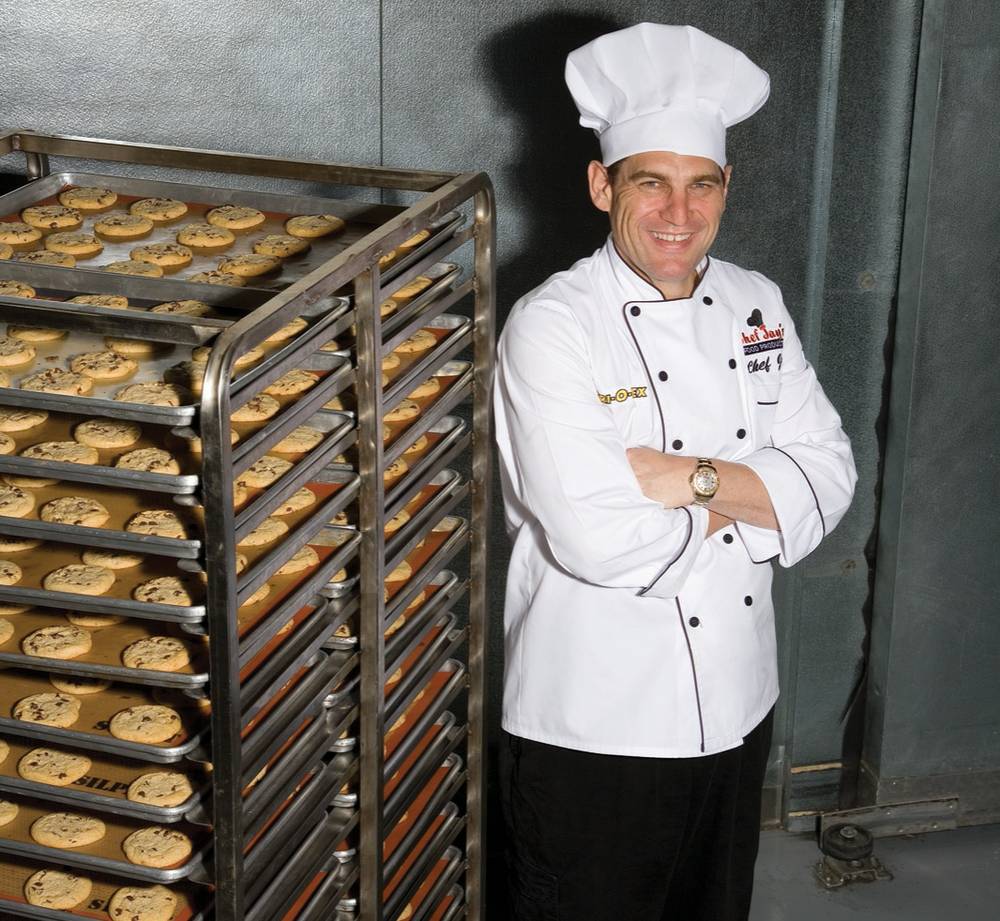
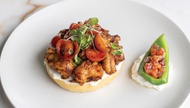
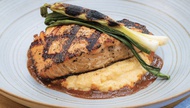
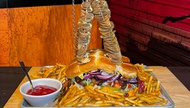
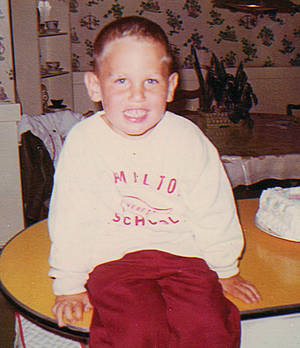
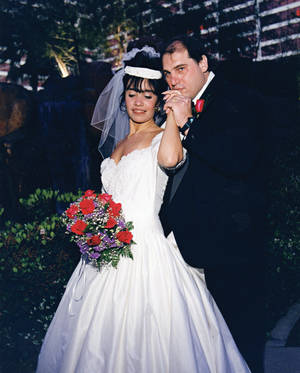
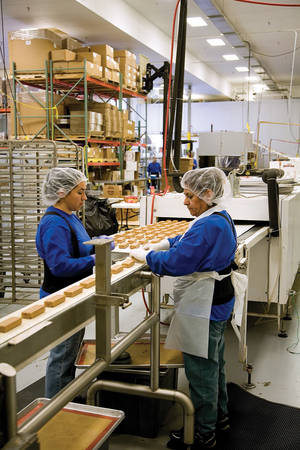
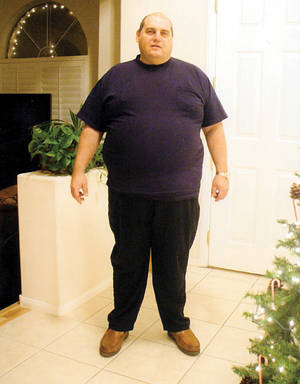

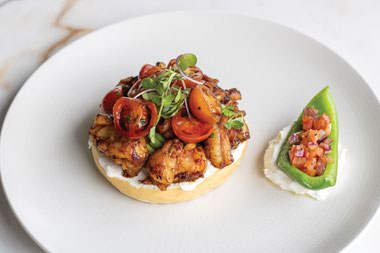

Previous Discussion: